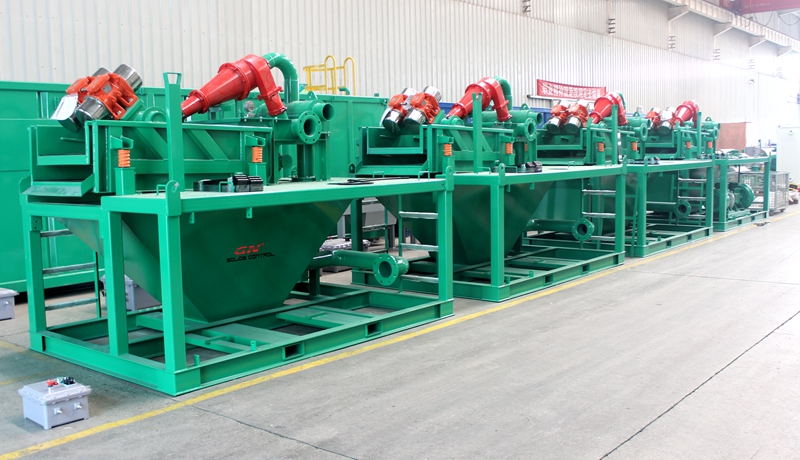The oil sludge treatment system is one of the separation solutions promoted at home and abroad in recent years. It is mainly used to treat sludge from oil field drilling, oily wastewater from refineries and sludge from oil storage tank bottom sludge.
GN Solids Control currently has three standard models of sludge handling systems with processing capacities of 1-2, 5-10 and 15 cubic meters per hour. The picture below shows the GNOST-05A produced by domestic customers in China.
The GN Solids Control sludge treatment system consists mainly of the following modules:
1. Premixing module – This module includes a mixing tank, a stirrer and a transfer pump. First, the sludge is diluted in the tank to make the sludge more fluid and easy for subsequent module processing. Water and chemicals are added to the storage tank, and as the temperature of the heating system increases, the emulsified oil separates from the solid to become a demulsification mixture.
2, coarse screening module – a high G shale shaker is the key equipment of the module. The coarse particles will be removed through the screen. In order to prevent sludge splashing, the vibrating screen is also equipped with an anti-splash device.
3. Three-phase separation module – This module is combined with a centrifuge assembly and a disc centrifuge assembly. The centrifuge is used to remove most of the solids in the sludge to reduce the solids content. The liquid phase will then be sent to a disc centrifuge for separation of fine oil, water and ultrafine solids.
4. Chemical Dosing Device – GN Solids Control provides a container chemical dosing device that distributes chemicals to each module in the system. The containerized design makes the module easy to transport.
GN Solids Control has extensive experience in the development of this type of sludge handling system. A large number of case studies have been available at home and abroad for reference. For more information on GN Solids Control sludge handling equipment, please feel free to contact us.






